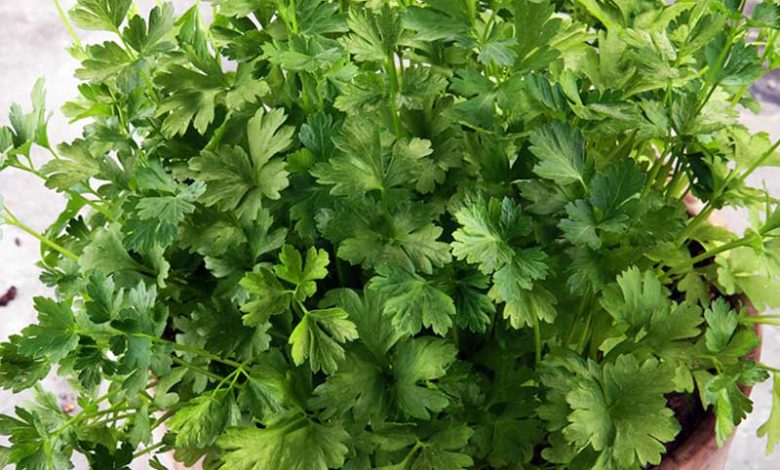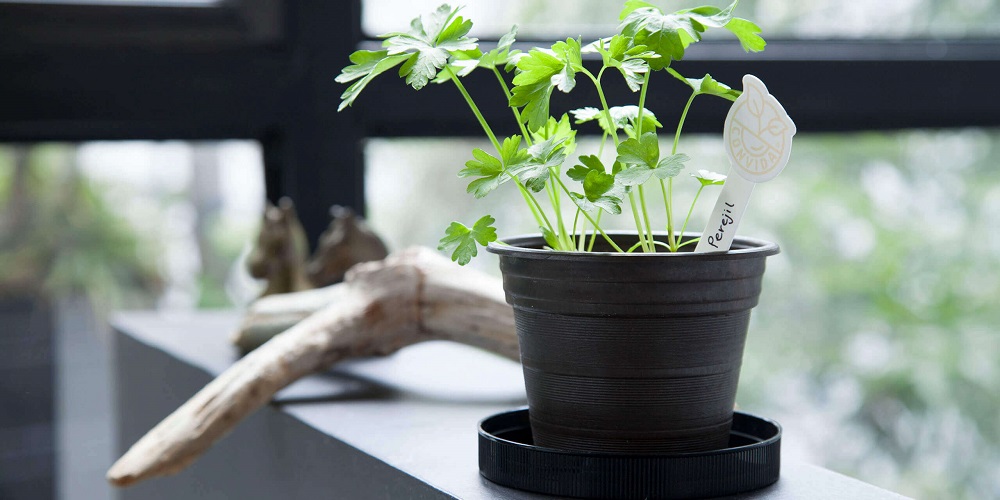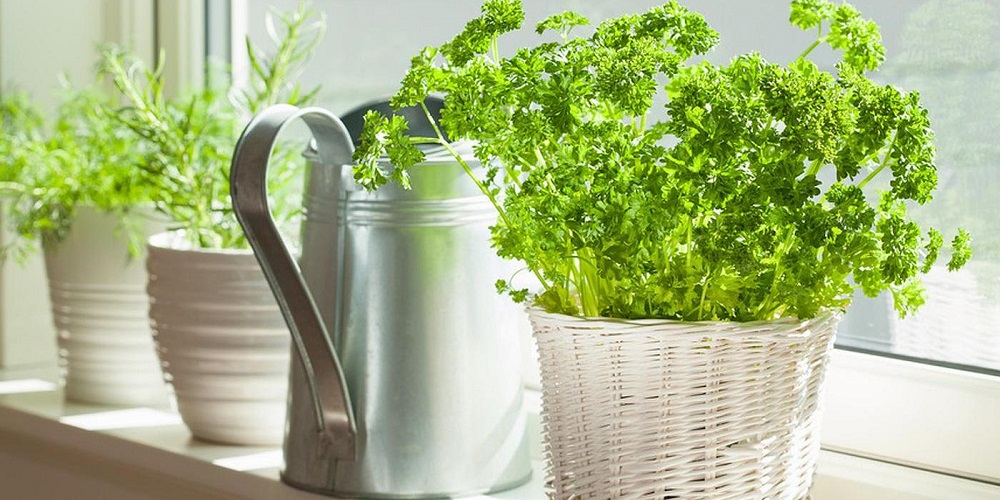How to grow parsley in pots

The use of plants in medicinal, culinary, therapeutic and other fields extends back thousands of years and among them stands out a representative of herbaceous plants that has many applications in the kitchen: parsley. This species can be easily grown at home by following a few simple gardening steps.
Parsley, scientifically known as Petroselinum crispum, is a herbaceous plant native to the Mediterranean . It is classified as a condiment due to its characteristic smell and flavor, as well as being a small plant that is easy to cut.
It has green leaves and can grow up to approximately 30 centimeters in height. On the other hand, its stems reach 60 centimeters and may have yellowish flowers at the ends, but the parsley flower is not suitable for consumption, since it has a bitter taste.
As mentioned, it is used in cooking in many parts of the world, since its properties, mainly its aroma, are capable of considerably intensifying the flavor of food. Besides, it should be noted that it has multiple beneficial properties, which we will talk about below in case planting parsley at home has caught your attention.
parsley properties
Being such a widely used and well-known plant, parsley has been analyzed in depth and various studies have concluded that its regular consumption has several benefits that are worth noting:
- Diuretic
When parsley is planted, a plant capable of eliminating fat will be obtained, so it will be beneficial in diets. Also, its diuretic properties help eliminate excess water in people who suffer from fluid retention.
- antioxidant
Another aspect to highlight among its properties is that it is rich in beta-carotene and vitamin C ; compounds that contain properties to help with heart-type diseases.

- Digestive
Considering that parsley is a fibrous plant, it also offers benefits in the area of digestive processing, specifically the expulsion of gases, so it is very good to help with indigestion and other intestinal discomfort.
- Aphrodisiac
The consumption of parsley can even influence as an aphrodisiac, mainly in women, due to its high content of phytoestrogens; a chemical compound very similar to estrogen that, in addition, also helps to increase the toning of the uterus.
Requirements for growing parsley
If you have a couple of parsley seeds on hand or you have plants from which to take cuttings to transplant them at home, below you will find the basic requirements for planting and subsequent cultivation:
- Climate
If you want to know when parsley is planted, you should keep in mind that the answer will depend on how fast you want to see it bloom; since it is a resistant plant that can be cultivated in many types of climate, although it generally develops better in warm environments.
- I usually
In terms of soil, parsley also turns out to be quite adaptable, as it can flourish in different types of soil. However, it has been found to prefer loose, deep, compost-rich soils, where it can unleash its stems to their full length.
- Irrigation
In terms of irrigation, parsley needs moisture, but you cannot exceed the amount of water or the regularity of watering, as it could rot or stun its growth. Instead, it is advisable to keep the soil slightly moist , in order to provide only the necessary hydration.

How to harvest parsley?
Now that you are aware of all the benefits obtained from parsley consumption, we have prepared a complete step-by-step guide where you will learn how to grow it at home:
- Prepare the pot
To start you will need a small or medium pot, depending on the size you want to keep planted in this way before moving it to the garden or cutting it. Fill the pot with black potting soil, making sure to moisten each layer a little with water using a spray bottle.
- Plant the seeds
When you have prepared about ¾ of the pot filled with soil, it will be time to plant the parsley seeds. Spread several on top, then add an additional 1 inch of black soil to cover them. Finish with a profuse watering without overdoing it.
- Irrigation Recommendations
The watering method for a potted parsley plant will depend on the season in which it has been sown, since, if it has been in winter, you will have to water the pot enough to moisten the soil every 2 weeks, but if it has been in summer, watering is increased to a frequency of every 2-3 days.
Besides, you should know that in cold weather, the parsley sprout can take up to a month to come out, while in hot weather, you will see it appear approximately just 15 days after planting it.
- Cut stems and leaves
In case you are wondering how to cut parsley so that it continues to grow, you should know that one of the most repeated recommendations is to practice pruning when the flowers appear at the tips of the stems. This is not considered a loss, as this section of the plant is not really useful and keeping it would only weaken the parsley.
However, one thing to keep in mind if you plan to plant more parsley is that the seeds are in the flowers .
- parsley harvest
To carry out the process of harvesting the parsley, you will have to wait between 2 to 3 months depending on when you have planted the seeds. Once you notice that your plant has enough stems, you can cut the ones you need to cook. Finally, you also have the option of letting the parsley dry so that you can crush it and use it as a powder in all kinds of recipes, stews, soups and much more.

![Photo of Prune a Jacaranda: [Importance, Time, Tools, Considerations and Steps]](https://www.complete-gardening.com/wp-content/uploads/2021/06/Jacaranda_1621373875-390x220.jpg)

![Photo of The Best Electric Brushcutter: [Our Pick]](https://www.complete-gardening.com/wp-content/uploads/2022/08/the-best-electric-brushcutter-our-pick-390x220.jpg)
![Photo of Marijuana Cuttings: [Associations, Best Time and Planting]](https://www.complete-gardening.com/wp-content/uploads/2022/08/marijuana-cuttings-associations-best-time-and-planting-390x220.jpg)